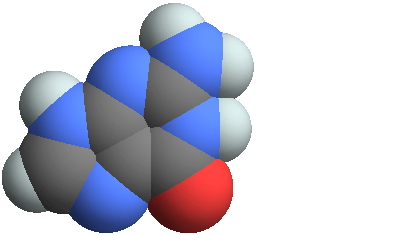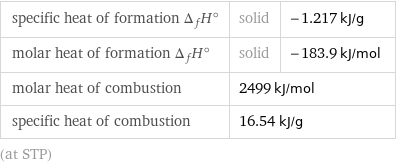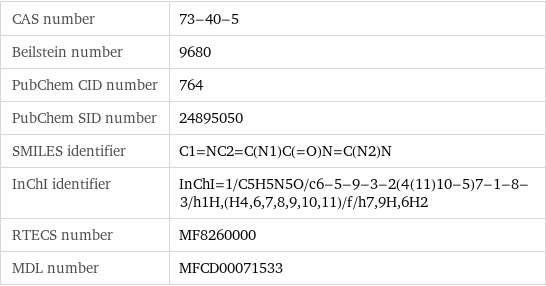Input interpretation

guanine
Chemical names and formulas

formula | C_5H_5N_5O name | guanine IUPAC name | 2-amino-3, 7-dihydropurin-6-one alternate names | 2-amino-1, 7-dihydro-6H-purin-6-one | 2-amino-3, 7-dihydropurin-6-one | 2-amino-6-hydroxypurine | 2-aminohypoxanthine | dew pearl | guanin | guanine enol | mearlmaid | naturon | stella polaris mass fractions | C (carbon) 39.7% | H (hydrogen) 3.33% | N (nitrogen) 46.3% | O (oxygen) 10.6%
Lewis structure

Draw the Lewis structure of guanine. Start by drawing the overall structure of the molecule, ignoring potential double and triple bonds: Count the total valence electrons of the carbon (n_C, val = 4), hydrogen (n_H, val = 1), nitrogen (n_N, val = 5), and oxygen (n_O, val = 6) atoms: 5 n_C, val + 5 n_H, val + 5 n_N, val + n_O, val = 56 Calculate the number of electrons needed to completely fill the valence shells for carbon (n_C, full = 8), hydrogen (n_H, full = 2), nitrogen (n_N, full = 8), and oxygen (n_O, full = 8): 5 n_C, full + 5 n_H, full + 5 n_N, full + n_O, full = 98 Subtracting these two numbers shows that 98 - 56 = 42 bonding electrons are needed. Each bond has two electrons, so in addition to the 17 bonds already present in the diagram add 4 bonds. To minimize formal charge carbon wants 4 bonds, nitrogen wants 3 bonds, and oxygen wants 2 bonds. Identify the atoms that want additional bonds and the number of electrons remaining on each atom: Fill in the 4 bonds by pairing electrons between adjacent highlighted atoms: Answer: | |
3D structure

3D structure
Basic properties

molar mass | 151.13 g/mol phase | solid (at STP) melting point | 300 °C density | 1.67 g/cm^3 solubility in water | very soluble
Units

Hydrophobicity and permeability properties

experimental LogP hydrophobicity | -0.91 predicted LogP hydrophobicity | -0.96 predicted LogS | -1.78
Basic drug properties

approval status | experimental | small molecule
Solid properties (at STP)

density | 1.67 g/cm^3
Units

Thermodynamic properties

specific heat of formation Δ_fH° | solid | -1.217 kJ/g molar heat of formation Δ_fH° | solid | -183.9 kJ/mol molar heat of combustion | 2499 kJ/mol | specific heat of combustion | 16.54 kJ/g | (at STP)
Chemical identifiers

CAS number | 73-40-5 Beilstein number | 9680 PubChem CID number | 764 PubChem SID number | 24895050 SMILES identifier | C1=NC2=C(N1)C(=O)N=C(N2)N InChI identifier | InChI=1/C5H5N5O/c6-5-9-3-2(4(11)10-5)7-1-8-3/h1H, (H4, 6, 7, 8, 9, 10, 11)/f/h7, 9H, 6H2 RTECS number | MF8260000 MDL number | MFCD00071533
NFPA label

NFPA label

NFPA health rating | 1 NFPA fire rating | 1 NFPA reactivity rating | 0
Toxicity properties

RTECS classes | tumorigen | mutagen